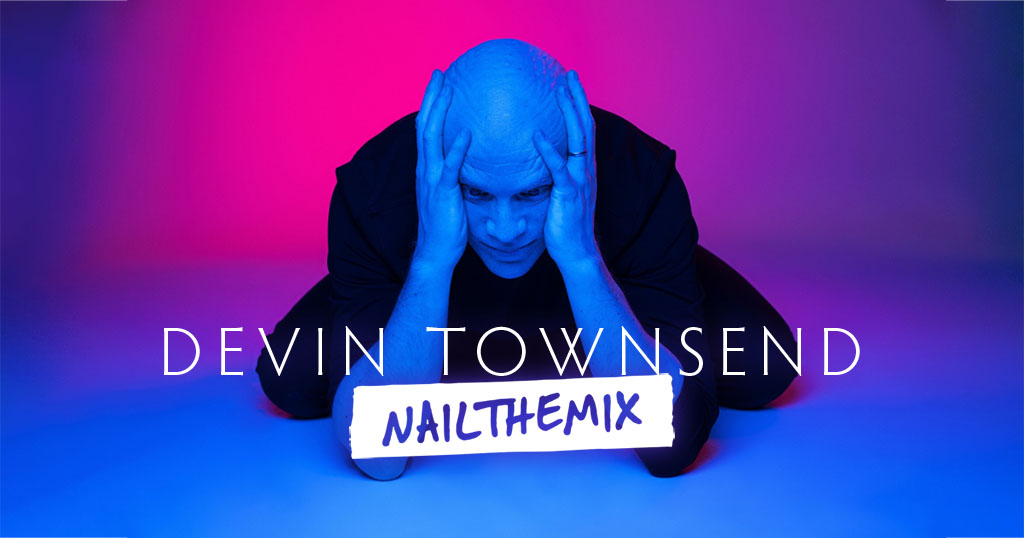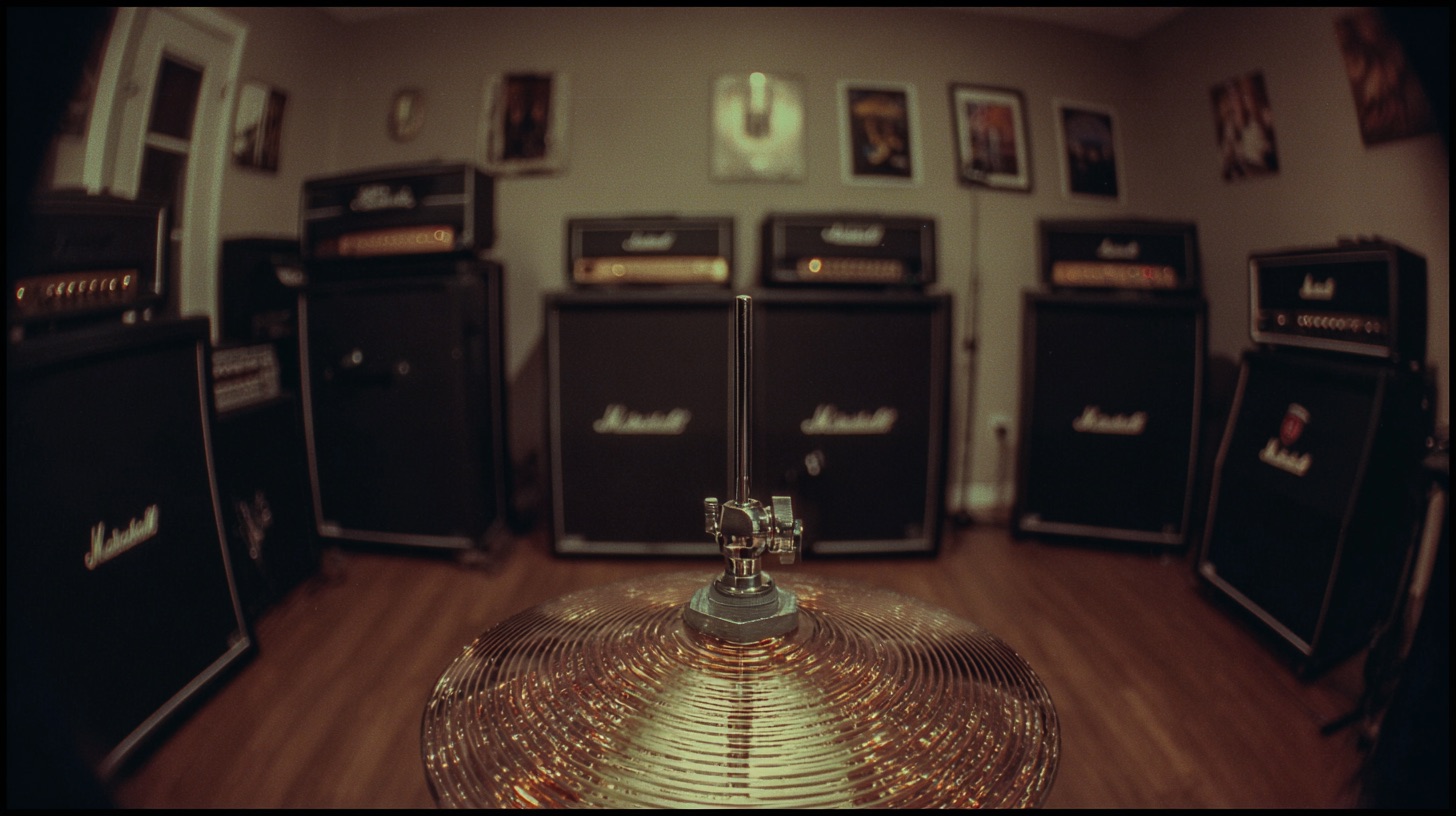
Devin Townsend’s Orchestral Mix Philosophy for Dense Metal
Nail The Mix Staff
Let’s face it, a Devin Townsend track is a universe unto itself. The sounds are massive, layered, and complex, yet somehow everything has its place. Ever wonder how he wrangles that beautiful chaos into a cohesive, powerful mix? The answer is surprisingly unconventional. Devin doesn’t just “mix” in the traditional sense; he approaches it like an orchestrator, where every sound has a specific role and frequency slot.
This mindset shift from a technical process to an artistic one is the key to his iconic sound. We dove into his process and uncovered some killer concepts you can apply to your own dense metal productions.
The Core Concept: Mixing as Orchestration
For Devin, the mix serves one primary purpose: to realize the arrangement. This means that instead of just trying to make things sound “badass” in isolation, every decision is about how the parts fit together as a whole. It’s a philosophy built on frequencies and relative levels.
He starts with big, broad moves to establish the foundation, focusing on the low end first. Then, he gradually works his way down to smaller, more detailed tweaks as more instruments are brought into the mix. The goal isn’t to follow a rigid set of rules but to ensure every element has its own space to breathe, just like instruments in an orchestra. If the arrangement is solid, the elements should practically mix themselves.
Hunting “Fourth Wall Breakers”
In complex sections with a ton of information, Devin’s first job is to find anything that breaks the fourth wall—anything that pokes out and reminds you you’re listening to a recording. To do this, he’ll loop a busy section over and over again.
What’s he listening for?
- An obvious compressor: If you can audibly hear a compressor pumping unnaturally, it’s distracting. The goal is for compression to feel invisible, gluing things together without drawing attention to itself.
- A harsh EQ frequency: A piercing frequency that grates on your ears or sticks out from the sonic wall needs to be tamed.
- A single instrument that’s too loud: If one guitar part or synth layer is pulling your focus away from the overall impact, its level needs to be adjusted.
By looping these sections, he can identify and subtly tuck these distracting elements back into the mix. This is where smart and surgical use of parametric EQ and compression becomes crucial to maintaining a polished, professional sound.
The Secret Weapon: The “GP” Guitar Layer
Here’s a trick that goes all the way back to his Ocean Machine days. Devin uses a Roland GP-100 to create a unique guitar layer that adds a specific kind of depth and texture to his sound.
What is the “GP” layer?
This isn’t your main chugging rhythm tone. He describes the sound from the GP-100 as an idiosyncratic, “weird misty thing” that sits on top of the main guitars. It has a very different frequency profile, living largely in the 3kHz to 6kHz range. It doesn’t provide the main power but instead adds a layer of ethereal depth.
How to Use It in Your Mix
The magic is in how this layer interacts with the main heavy guitars.
- Add the “Misty” Layer: Create a guitar track using a similar high-mid focused, almost thin-sounding patch. A multi-effects unit or a characterful amp sim can get you in the ballpark.
- Blend It In: Mix this layer in with your main distorted guitars. You’ll notice it adds a sheen and complexity on top.
- Carve Out Space: Here’s the key. Because the GP layer is so rich in the 3-6kHz range, you can now go back to your main heavy guitars and use an EQ to gently duck those same frequencies. This creates a perfect pocket for the GP layer to sit in, adding depth without creating a harsh, cluttered high-end.
Bringing the Mix to Life with Dynamics
A static mix is a boring mix. Devin uses automation and sample layering to inject performance and impact, especially during a song’s most intense moments.
Breathing Life with Automation
Instead of setting faders and forgetting them, Devin actively rides them throughout the song. In one section, he wants to accent two specific kick drum hits to make them punch harder. Using a control surface in touch mode, he manually pushes the volume of the kick track just for those two hits. This kind of micro-automation adds a human feel and dynamic excitement that static processing can’t replicate.
Epic Climaxes with Sample Layering
For the huge, climactic ending of a song, a single snare sound might not be enough. To add the necessary weight and drama, Devin layers in a specific snare sample he calls the “Armory Snare.”
He doesn’t use it to replace the original snare but to enhance it at a key moment. By blending in this powerful, explosive sample just for the climax, he elevates the energy of the entire section, making the finale feel truly massive. This demonstrates a key principle: use samples as an orchestral tool for dynamic effect, not just a corrective one when mixing drums.
The Final Check: Listening in Mono
After all the layering and automation, how do you ensure everything is translating? Devin relies on the classic mono check. He’ll listen to the entire mix in mono for an extended period, sometimes for a whole day.
This isn’t just about checking for phase issues. For him, it’s the ultimate test of his orchestral approach. If you can clearly hear every important instrument in mono, it means each one has its own defined frequency space. If an element disappears, you know you need to go back and use EQ to carve out a better slot for it so it can be heard.
Taking These Concepts Further
Applying Devin Townsend’s orchestral philosophy can fundamentally change how you approach a dense mix. It’s about serving the song, creating space, and using every tool at your disposal to build a dynamic and immersive soundscape.
Devin Townsend on Nail The Mix
Devin Townsend mixes "Lightworker"
Get the Session
These concepts are a powerful starting point. But imagine watching a master like Devin Townsend actually build one of his mixes from scratch, explaining every plugin, EQ move, and philosophical choice along the way. In his full Nail The Mix session, you get to be a fly on the wall for exactly that. You’ll get the raw multitracks from his song “Lightworker” and watch him construct its massive sound from the ground up.
If you’re ready to move beyond presets and truly unlock your sound by mixing modern metal like the pros, this is your chance. Join the Nail The Mix community and see how the biggest names in metal create their world-class sounds.
Check out Devin’s full mixing session right here.
Get a new set of multi-tracks every month from a world-class artist, a livestream with the producer who mixed it, 100+ tutorials, our exclusive plugins and more
Get Started for $1





